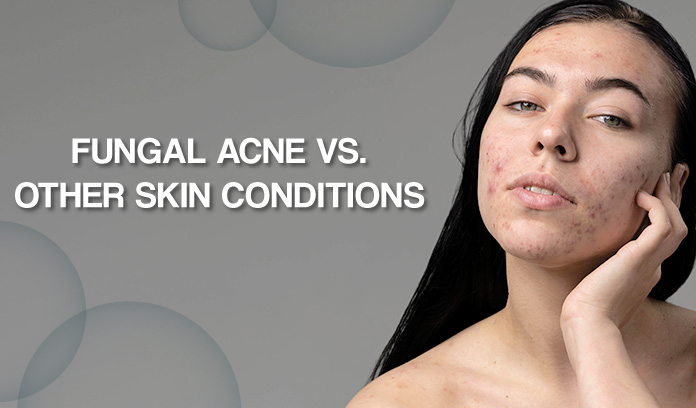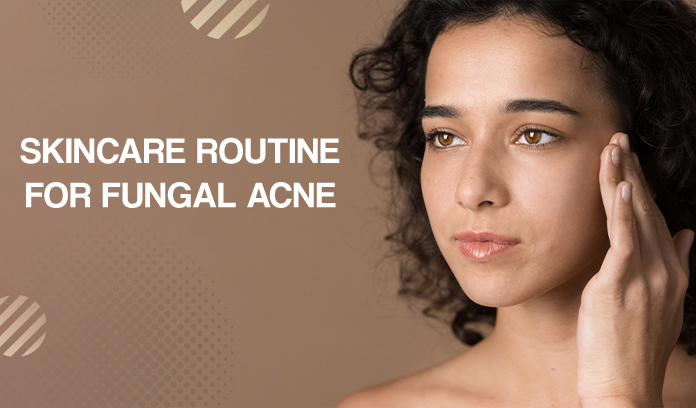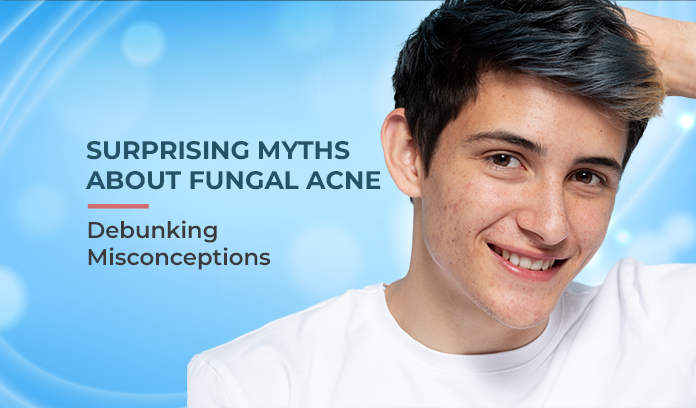Are you struggling to identify whether your skin condition is fungal acne or something else? Dive into this comprehensive guide to learn about the symptoms, diagnosis, and treatment options for fungal acne, and how it differs from other common skin conditions.
Recognizing Fungal Acne Symptoms
Fungal acne, also known as Malassezia folliculitis, often presents itself as acne-like rashes that may be mistaken for traditional acne. However, there are key differences, including uniformity in size and shape of lesions, itchiness, and resistance to typical acne treatments. Understanding these fungal acne symptoms is crucial for accurate diagnosis and treatment.
Differential Diagnosis of Skin Conditions
When it comes to skin condition diagnosis, it’s essential to differentiate between fungal acne and other similar conditions such as acne vulgaris, eczema, and rosacea. A thorough dermatological examination can help identify specific characteristics and patterns, guiding healthcare professionals in making an accurate diagnosis.
Tailored Treatment for Fungal Acne
Unlike traditional acne, which is often treated with topical or oral medications targeting bacteria, fungal acne treatment requires antifungal agents to combat the overgrowth of Malassezia yeast. This may include topical antifungal creams, medicated shampoos, and oral antifungal medications, depending on the severity of the infection.
Understanding Candida Overgrowth Effects
In addition to fungal acne, Candida overgrowth can lead to various skin issues, including rashes, itching, and inflammation. Factors such as a compromised immune system, hormonal imbalances, and an imbalance in the skin microbiome can contribute to Candida overgrowth, exacerbating skin conditions and requiring specialized treatment approaches.
Differentiating Skin Conditions: Fungal Acne vs. Acne Vulgaris
While fungal acne and acne vulgaris share some similarities, such as the appearance of acne-like lesions, they are caused by different underlying factors. Acne vulgaris is primarily driven by excess sebum production and bacterial colonization of hair follicles, whereas fungal acne results from an overgrowth of Malassezia yeast in the hair follicles.
Restoring Skin Health with Proper Diagnosis and Treatment
By understanding the nuances between differentiating skin conditions, individuals can seek appropriate treatment options tailored to their specific needs. Whether addressing fungal acne, acne vulgaris, or other skin concerns, consulting with a dermatologist is essential for accurate diagnosis and effective management of skin conditions.
Embracing Skin Wellness
Maintaining a healthy skin microbiome through proper skincare practices, including gentle cleansing and moisturizing, can help prevent imbalances that contribute to fungal acne and other skin conditions. Embracing a holistic approach to skincare, encompassing both internal and external factors, is key to achieving optimal skin health and overall well-being.
Seek Professional Guidance for Skin Concerns
If you’re experiencing persistent skin issues or are unsure about your condition, don’t hesitate to seek professional guidance from a dermatologist or healthcare provider. With their expertise and diagnostic tools, they can provide personalized recommendations and treatment plans to address your specific skin concerns effectively.
Empower yourself with knowledge about fungal acne and other skin conditions to make informed decisions about your skincare journey. By understanding the symptoms, diagnosis, and treatment options, you can embark on a path towards healthier, radiant skin. Remember, your skin deserves the utmost care and attention, so prioritize its well-being with proper diagnosis and treatment.










